Driveshaft Shop Carbon Fiber shafts Explained
#1
Launching!
Thread Starter
Join Date: Mar 2011
Location: Charlotte NC
Posts: 261
Likes: 0
Received 0 Likes
on
0 Posts
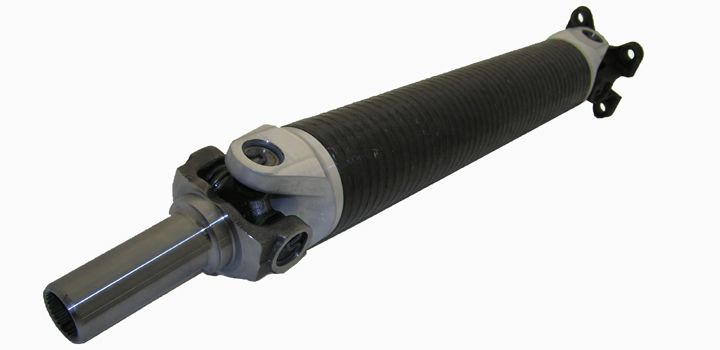
Our Carbon Fiber Shafts are a bit different, due to the fact that we have decided to take our time and offer what we feel is the best shaft that we could make. Before we come out with a new product we will take the time to investigate, research and put our own spin on what's currently being done. Over the years we have done extensive research, always reading and collecting information about Carbon Fiber, but with all that was going on the time was never right, until now. This company was founded by my father Robert Rehak, along with my uncle Carl Weisane, back in the late 60's when a double cardan CV was considered "High Tech". I would think these gentleman would be rolling over in their graves by now, knowing that we were literally "gluing shafts together".
Over the years I have seen many failures of Carbon Fiber shafts and I have collected many samples, (too many to show) but there was one thing that stood out on all of them. A certain profile on the aluminum (or steel) part that was mated to the Carbon Fiber seemed to be very consistently showing up. When we decided to move forward with Carbon Fiber shafts last year, we wanted to wait until we had our custom balancer in place so we could accurately test the claims of what Carbon Fiber shafts had to offer.
The first thing to do was find suppliers for the tubing, glue and of course the u-joint ends (unless we were going to be making them). I contacted my friends Tony and Brian at Sonnax, whom I've worked together with over the years on several aluminum yoke designs, and asked how their new line of u-joint ends were coming for use with Carbon Fiber. In the past we had been using another manufacturer for aluminum ends and had trouble with more than our share of bad parts, namely some of the GTO 200mph shaft ends that had issues with the u-joint fitment. Sonnax has been supplying our ends for the weld together shafts for quite some time, and their quality was more in line with what DSS demands for our customers, so it was a natural choice to incorporate them in our Carbon Fiber line.
I then contacted our Carbon Fiber tube manufacturer and spoke in depth with the head engineer about critical speed, strength and run out. I found that the critical speeds that they were quoting to us were phenomenal, but after research of our own found some of it to be misleading. They were quoting the tube only and not taking into consideration the u-joint ends and mounting points, like the SAE standards for critical speed show. Still, they were much higher and offered some real benefits to a lot of the newer cars that we were having certain issues with. After this we spoke to the 3M engineers about different glues and bonding processes and moved on to putting it all together.

Back to the design, we were told by the tubing manufacturer that ends of the tube come un-machined (we had known this from the past) and it was up to us to put the profile on the outer diameter of the tube so that the glue would bond correctly. It was suggested that we put a thread pattern, or as we were told, lines like an old 33LP record (you do remember records right?) was the best way to get the correct bond. Now at this point is where DSS deviates from the rest of the crowd, as this is the very same profile that i had seen in every bond failure and was uncomfortable with this assessment of the correct way to bond.
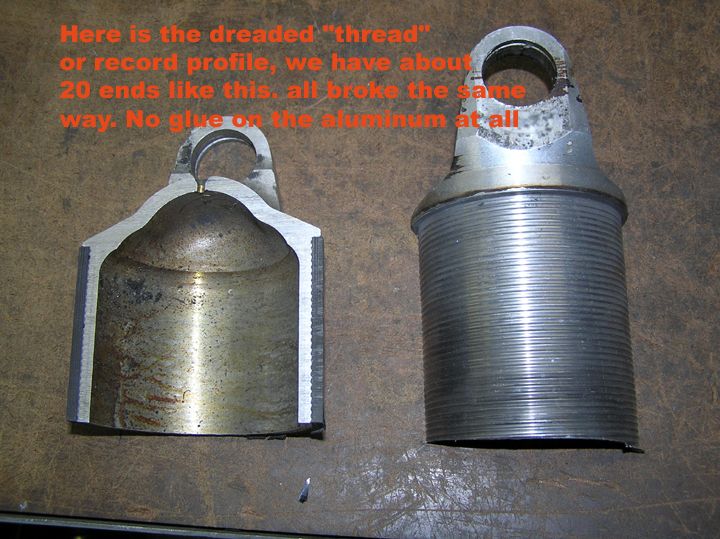
Tony and Brian from Sonnax had said they were working on a new profile for the u-joint ends and sent over some prints for me to look at (which was very cool of them). I was thoroughly impressed, even my gut instinct was happy, so we decided on this design and moved onto the rest of the planning. One very interesting thing that I observed when inspecting various cut and broken bonded ends from the samples I had been collecting, was one of the ends we had cut apart from a current production Nissan 350Z. Take a look at the way the Nissan factory did their bonding. There are no ridges on this one and we couldn't get the tube off of the end at all. It was now a part of the end, and there was no taking it off period. Although the Sonnax design is not exactly the same, it has some very important similarities that made me feel better about our choice.
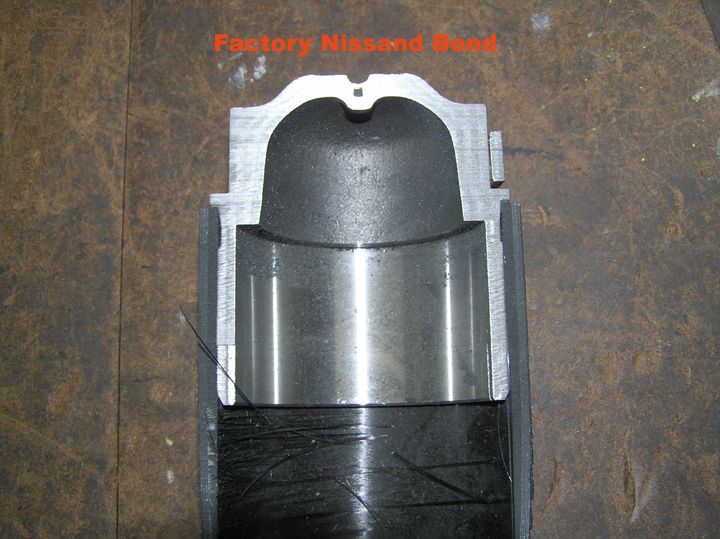

Glue and Curing. We could go on and on about how much time we have spent on this part of the equation, but I feel some things need to be kept inside of the magicians hat, so all we will say is that there are several ways to bond and cure the glue. We did not take the easy way out on this one. My son Frank IV will be graduating from college this year with a degree in Machine Engineering, and like me he has a real eye for details. I'm proud to say that between him and myself we perfected our bonding process. He will be bonding all of the Carbon Fiber shafts, and of course Matt, our head builder who moved down from NY with the company, will oversee every operation and balance them upon completion. Frankie's no stranger to the shop or cars as he has always been around as a kid growing up. Check out his High School senior project (you should have seen the principal's reaction to him asking about doing this for his senior project). It would hard for me to say he didn't get any help from the guys in the machine shop doing this, but i will say it was all his idea and execution.
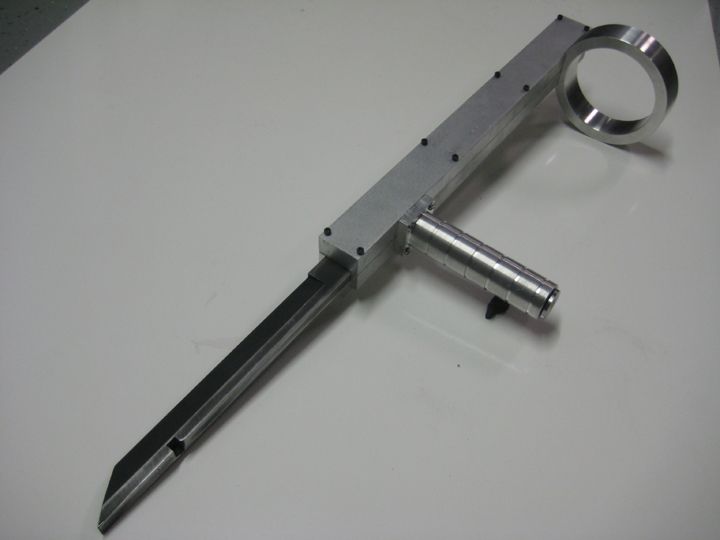

So after all of this, we have researched, spoken about and done, it was time for testing. We assembled a few shafts and off they went to the destructive testing lab for some bench testing before we put the shaft in a real car. We prefer this method of new part testing first to make sure all processes are done correctly, with both shafts and axles. Testing went very well, in fact better than we could have hoped for. As you see in the picture below what actually broke was the u-joint cross, the tube and bond remaining fully intact. The torque spec for the u-joint was at about 2600 ft-lbs of torque, but all the test shafts broke right at 3100 ft-lbs (Neapco should be very proud of the performance of these u-joints).
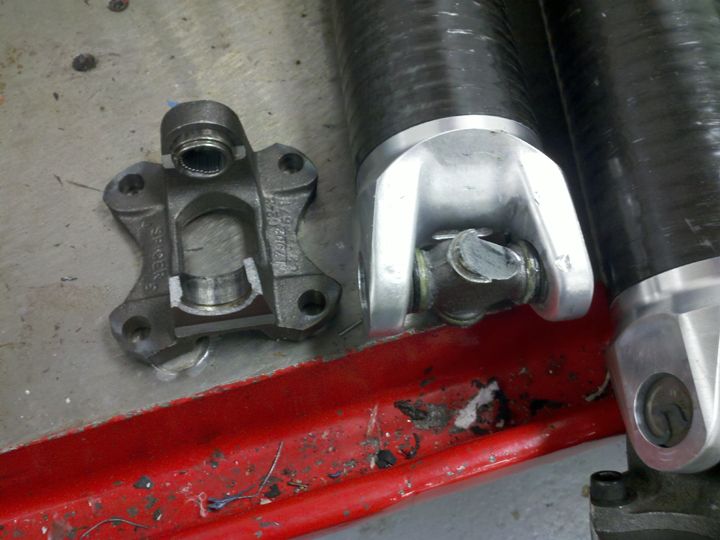
On the 2010 Camaro you need to have some sort of slider in the shaft. After several attempts to use a traditional slip yoke and spline had failed, a CV joint was chosen for its movement ability, more so for its ability to move in and out with out any side to side play. We wanted to keep the shaft lightweight but more importantly, come up with a design that would be able to move this heavy muscle car down the track without any issues. I came up with an idea to put a 300M spline in to an aluminum part and engaging it with splines. Some engineering calculations were done and some prototypes were made, and the end result is the shaft shown below. We didn't just stop there though, we also went into the CV and added the DSS 4340 cage and a specially formulated grease that we use for all of our World Challenge and SCCA pro race car axles to make sure there is no issue down the road. This, along with balancing the shaft with all of the fixtures on the balancer, makes every Carbon Fiber shaft that we offer a step above the rest. And if you need a custom shaft made from Carbon Fiber, just give us a call. We're all set up and ready to go...
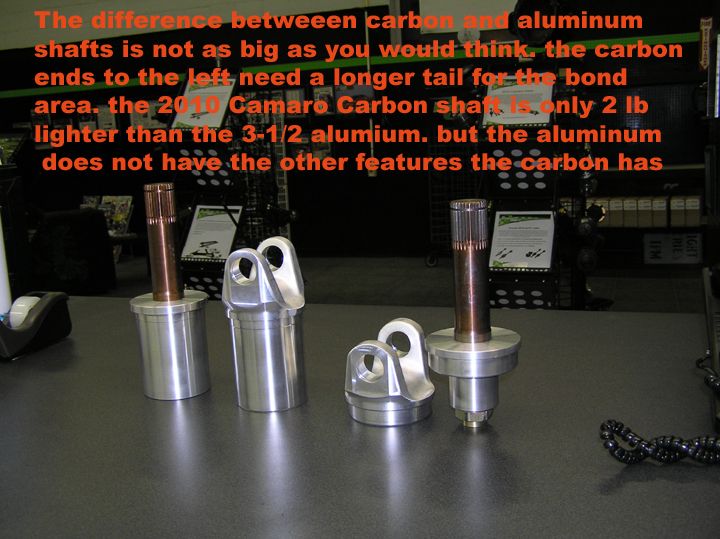

#3
Launching!
Thread Starter
Join Date: Mar 2011
Location: Charlotte NC
Posts: 261
Likes: 0
Received 0 Likes
on
0 Posts
The biggest difference would be we are using a new 3-3/8 custom wound tube, this is smaller than the 3-3/4 we 1st started using and others like PST/Gforce are currently using (will have clearance issues). that and the fact that were using a rear flange to mount the shaft with a 4340 (corrected from 4140) Billet mount (click here to see about billet yokes VS flanges in modern muscle cars) of coarse it will also be balanced on one of best balancers out also. hope that covers it.
The new balancing machine (click here for details)
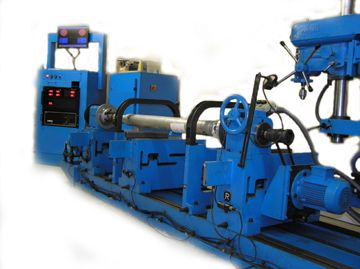
the billet rear mount

The new balancing machine (click here for details)

the billet rear mount

Last edited by Driveshaft Shop; 04-05-2011 at 02:56 PM.
#4
Staging Lane
iTrader: (1)
Join Date: Jul 2007
Location: Roaming the wasteland of Arizona
Posts: 50
Likes: 0
Received 0 Likes
on
0 Posts

The biggest difference would be we are using a new 3-3/8 custom wound tube, this is smaller than the 3-3/4 we 1st started using and others like PST/Gforce are currently using (will have clearance issues). that and the fact that were using a rear flange to mount the shaft with a 4140 Billet mount (click here to see about billet yokes VS flanges in modern muscle cars) of coarse it will also be balanced on one of best balancers out also. hope that covers it.
The new balancing machine (click here for details)

the billet rear mount

The new balancing machine (click here for details)

the billet rear mount

#5
Launching!
Thread Starter
Join Date: Mar 2011
Location: Charlotte NC
Posts: 261
Likes: 0
Received 0 Likes
on
0 Posts
What if we already have a 1350 u-joint (aftermarket rearend) and want to keep this without going to the billet mount, is this option available? Also 3-3/8" tube is only 3/16" of an inch more clearance on a side than a 3-3/4" tube. Although this is 3/16" more room, you will still have to watch out for clearance issues like the seatbelt bolts (still will need to cut/grind them). Regardless of the shaft material you choose, safety first and check for the needed clearance. Nice balancer! Are these shafts available now?
#6
Staging Lane
iTrader: (1)
Join Date: Jul 2007
Location: Roaming the wasteland of Arizona
Posts: 50
Likes: 0
Received 0 Likes
on
0 Posts

Yes we could do this, We have used the 3-1/2 aluminum for years and the only thing that gets close is the seat belt bolt (with 3-1/2 tube) We have used many 4" shafts in our 8.8 kit and also one in the New 9" kit but both rear have a lower pinion output than the stock diff does. using the 3-3/8 Carbon Fiber tube will ensure the proper clearance (still remove or change the seat belt bolt) We make the shafts to order so it would take 10-14 days for it to be made and cure correctly.
#7
Launching!
Thread Starter
Join Date: Mar 2011
Location: Charlotte NC
Posts: 261
Likes: 0
Received 0 Likes
on
0 Posts
sorry about that i reply why I'm working and should not do that (doing to many things at one time), the ends are 4340 and we have a outside company update the site so there behind. i jumped in and corrected the info myself. sorry for the confusion
Trending Topics
#10
Launching!
Thread Starter
Join Date: Mar 2011
Location: Charlotte NC
Posts: 261
Likes: 0
Received 0 Likes
on
0 Posts


